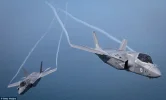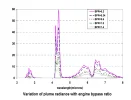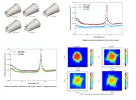Hollannin laivaston komentaja kiistää tiedon lisäkoneiden hankkimisesta
Install the app
How to install the app on iOS
Follow along with the video below to see how to install our site as a web app on your home screen.
Note: This feature may not be available in some browsers.
You are using an out of date browser. It may not display this or other websites correctly.
You should upgrade or use an alternative browser.
You should upgrade or use an alternative browser.
F-35 Lightning II
- Viestiketjun aloittaja Hejsan
- Aloitus PVM
F-35:n kauppa Turkkiin kuplii pinnan alla monella tasolla, tässä yksi niistä
http://www.defensenews.com/articles...block-f-35-sales-to-turkey-over-embassy-brawl
http://www.defensenews.com/articles...block-f-35-sales-to-turkey-over-embassy-brawl
Sarek1
Ylipäällikkö
F-35:n kauppa Turkkiin kuplii pinnan alla monella tasolla, tässä yksi niistä
http://www.defensenews.com/articles...block-f-35-sales-to-turkey-over-embassy-brawl
Turkiye. Need I say more? Estää parhaillaan mm. NATOn ulkopuolisia maita osallistumasta uusiin yhteisharjoituksiin. Mahtaneeko kauppa oikeasti kaatua tuohon pahoinpitelyjuttuun? Turpokysymyksiin saattaisi, mutta kun kyseessä on liittolainen ja big bucks, niin...
https://www.defense.gov/News/Contracts/Contract-View/Article/1240931/
"Lockheed Martin Corp., Lockheed Martin Aeronautics Co., Fort Worth, Texas, is being awarded a $5,577,714,486 modification to a previously awarded F-35 Lightning II low-rate initial production (LRIP) Lot 11 advance acquisition contract (N00019-16-C-0033)."
Kuinkahan monta kymmentä eri sopimusta pitää yhdistää, että saadaan tällä kertaa kokonaissumma selville.
///
Lisäselitystä, lot 11 sopimusta ei ole vieläkään olemassa kokonaisuudessaan:
https://www.dodbuzz.com/2017/07/07/pentagon-gives-lockheed-billions-to-keep-working-on-f-35s/
"the UCA — a type of contract in which bottom-line terms or prices have not been agreed upon"
"Lockheed Martin Corp., Lockheed Martin Aeronautics Co., Fort Worth, Texas, is being awarded a $5,577,714,486 modification to a previously awarded F-35 Lightning II low-rate initial production (LRIP) Lot 11 advance acquisition contract (N00019-16-C-0033)."
Kuinkahan monta kymmentä eri sopimusta pitää yhdistää, että saadaan tällä kertaa kokonaissumma selville.
///
Lisäselitystä, lot 11 sopimusta ei ole vieläkään olemassa kokonaisuudessaan:
https://www.dodbuzz.com/2017/07/07/pentagon-gives-lockheed-billions-to-keep-working-on-f-35s/
"the UCA — a type of contract in which bottom-line terms or prices have not been agreed upon"
Viimeksi muokattu:
Sarek1
Ylipäällikkö
Opposites attract, olisiko se siinä? Vakka ja kansi ovat aika usein yhdessä, samoin pata ja kattila. Minusta tuntuu, että useimmilla foorumilla kirjoittelevilla on oma Alpillinen ulottuvuutensa näissä järkkymättömyysasioissa. Kenellä sitten minkäkin asian suhteen.
Tietämyksen lisäämisen lisäämisen kannalta nämä puolesta ja vastaan -lainaukset ovat kyllä mielenkiintoista luettavaa kunhan lukiessa muistaa pitää polaroidit (tm) päässä. Eivät kai nämä artikkelit ketään täällä meillä haittaa? Ja sittenhän niissä esitettyä saadaan ruotia foorumilla pitkin ja poikin nojatuolien pohjalla kököttäen.
Ja vähän aihettakin ilmaan piirrellen:

Tietämyksen lisäämisen lisäämisen kannalta nämä puolesta ja vastaan -lainaukset ovat kyllä mielenkiintoista luettavaa kunhan lukiessa muistaa pitää polaroidit (tm) päässä. Eivät kai nämä artikkelit ketään täällä meillä haittaa? Ja sittenhän niissä esitettyä saadaan ruotia foorumilla pitkin ja poikin nojatuolien pohjalla kököttäen.
Ja vähän aihettakin ilmaan piirrellen:

Viimeksi muokattu:
F-35:n tutkan päivityksestä on julkaistu 3 miljoonan hankekilpailutus, jossa se toteutettaisiin sulautetulla järjestelmällä pohjautuen GPGPU-laskentaan. Aikataulu Block 4 eli 2021 (4A) tai 2023 (4B).
Eli sitä samaa mitä tehdään nykyään näytönohjaimilla. Nyt käytettäisiin tutkan signaalinkäsittelyyn. GPU:ja on F-35:ssa entisestään näyttöjen ajamiseen. Näyttäminen/renderöinti on tosin käyttötarkoituksena vähän eri asia kuin signaalinkäsittelyyn liittyvä laskenta.
Rinnakkaislaskennan tarve on suuri ottaen huomioon monet sensorit EOTSista (jolle päivitys Block 4:ssa) lähtien. SAR on tehtävänä myös haastava kun sille on isot odotukset.
http://www.militaryaerospace.com/ar...gnal-processing-embedded-computing-gpgpu.html
Eli sitä samaa mitä tehdään nykyään näytönohjaimilla. Nyt käytettäisiin tutkan signaalinkäsittelyyn. GPU:ja on F-35:ssa entisestään näyttöjen ajamiseen. Näyttäminen/renderöinti on tosin käyttötarkoituksena vähän eri asia kuin signaalinkäsittelyyn liittyvä laskenta.
Rinnakkaislaskennan tarve on suuri ottaen huomioon monet sensorit EOTSista (jolle päivitys Block 4:ssa) lähtien. SAR on tehtävänä myös haastava kun sille on isot odotukset.
http://www.militaryaerospace.com/ar...gnal-processing-embedded-computing-gpgpu.html
Viimeksi muokattu:
F-35:n tutkan päivityksestä on julkaistu 3 miljoonan hankekilpailutus, jossa se toteutettaisiin sulautetulla järjestelmällä pohjautuen GPGPU-laskentaan. Aikataulu Block 4 eli 2020+.
Eli sitä samaa mitä tehdään nykyään näytönohjaimilla. Nyt käytettäisiin tutkan signaalinkäsittelyyn. GPU:ja on F-35:ssa entisestään näyttöjen ajamiseen.
http://www.militaryaerospace.com/ar...gnal-processing-embedded-computing-gpgpu.html
Mielenkiintoista, mutta myös loogista. Gpu-arkitehtuuri soveltuu tuohon varmasti erinomaisesti.
Sellainen kysymys tuosta herää, että eikö kaikkea sensori-dataa laitetakaan yhteen fuusio-engineen?
Vai tuleeko tuo korkeamman tason käsittely erillään fuusion jälkeen?
Eiköhän tuo liittyne ensisijaisesti näihin jutussa mainittuihin tarpeisiin:
"The planned Block 4 upgrades to the F-35 are expected to include adding a wide-area high-resolution synthetic aperture radar (SAR)"
"The planned F-35 Block 4 upgrades also will include an upgraded electro-optical targeting system"
Lähinnä arvelen näkyvän tarkempana tiedustelu- ja maalitustietona maakohteista.
https://www.fbo.gov/index?s=opportunity&mode=form&tab=core&id=f9be0a6c2b1576bcaa4c2f51f519c3d1
"This effort is to design, fabricate and test GPUs paired with a supporting processor infrastructure compatible with advanced Block 4 radar requirements of the F-35."
Eli FPGA-piirien päälle tulee GPGPU-laskenta.
https://fi.wikipedia.org/wiki/FPGA
https://fi.wikipedia.org/wiki/GPGPU
FPGA Processing Boards Push New Performance Barriers
http://archive.cotsjournalonline.com/articles/view/104621
http://www.militaryaerospace.com/articles/2013/06/navy-f35-fpgas.html
"The planned Block 4 upgrades to the F-35 are expected to include adding a wide-area high-resolution synthetic aperture radar (SAR)"
"The planned F-35 Block 4 upgrades also will include an upgraded electro-optical targeting system"
Lähinnä arvelen näkyvän tarkempana tiedustelu- ja maalitustietona maakohteista.
https://www.fbo.gov/index?s=opportunity&mode=form&tab=core&id=f9be0a6c2b1576bcaa4c2f51f519c3d1
"This effort is to design, fabricate and test GPUs paired with a supporting processor infrastructure compatible with advanced Block 4 radar requirements of the F-35."
Eli FPGA-piirien päälle tulee GPGPU-laskenta.
https://fi.wikipedia.org/wiki/FPGA
https://fi.wikipedia.org/wiki/GPGPU
Exemplifying the sort of scale to which FPGAs are used in the military, a couple years ago Lockheed Martin was awarded a an Air Force contract modification of over $104 million to procure and deliver of over 80,000 Xilinx FPGAs required for building Joint Strike Fighter aircraft. FPGAs are used in several of the F-35 (JSF)'s systems including radar, comms and navigation systems.
FPGA Processing Boards Push New Performance Barriers
http://archive.cotsjournalonline.com/articles/view/104621
Millions of dollars awarded for thousands of FPGAs going into F-35 Joint Strike FightersThe communication, navigation, and identification friend or foe (IFF) avionics of the F-35 relies on Xilinx FPGAs, as do other critical electronic subsystems aboard the advanced jet. fighter-bomber. FPGAs enable Lockheed Martin to add new waveforms to embedded software radio systems in the F-35, as well as for real-time digital signal processing.
http://www.militaryaerospace.com/articles/2013/06/navy-f35-fpgas.html
Viimeksi muokattu:
Eiköhän tuo liittyne ensisijaisesti näihin jutussa mainittuihin tarpeisiin:
"The planned Block 4 upgrades to the F-35 are expected to include adding a wide-area high-resolution synthetic aperture radar (SAR)"
"The planned F-35 Block 4 upgrades also will include an upgraded electro-optical targeting system"
Juu, kyllä käyttötarpeet ja sovellus hyvin selkeitä. Mutta järjestelmän toteutuksesta ja arkitehtuurista nousi esiin paljon kysymyksiä.
Olen sitä kritisoinutkin, ettei ole välttämättä järkeä laittaa kaikkea yhteen ja samaan myllyyn. Keskenään yhteistyötä tekevät erikoistuneet ratkaisut ovat todennäköisesti tehokkaampia. Vaikuttaa siltä, että olin oikeassa. Vaikka primäärisuodatus voi toki edelleen olla yhteinen.
En osaa sanoa tältä pohjalta. FPGA ja GPGPU ovat toki yleisiä. Tosin jos ne lykätään jonkun avioniikan kylkeen niin onhan ne silloin erikoistuneita. Eli jos jotain käsitellään ja osa tiedosta jätetään lähettämättä Fusion Enginelle tms. mikä vekotin onkaan.Juu, kyllä käyttötarpeet ja sovellus hyvin selkeitä. Mutta järjestelmän toteutuksesta ja arkitehtuurista nousi esiin paljon kysymyksiä.
Olen sitä kritisoinutkin, ettei ole välttämättä järkeä laittaa kaikkea yhteen ja samaan myllyyn. Keskenään yhteistyötä tekevät erikoistuneet ratkaisut ovat todennäköisesti tehokkaampia. Vaikuttaa siltä, että olin oikeassa. Vaikka primäärisuodatus voi toki edelleen olla yhteinen.
Mikä lienee tarkoituksenmukaista palastelua missäkin osassa kokonaisuutta? Esimerkiksi MADLin tai LPI-AESA:n yhteydenpidon avulla voivat siirtää kokonaisia plotteja tutkan havaitsemista kohteista toiselle koneelle. Link 16 avulla lähinnä voitu antaa lopputulos, ei mitään sen rakennukseen tarvittuja osia.
Täällä juttua millainen mylly oli ainakin alun perin F-35:ssa.
http://embeddedstar.com/press/content/2004/2/embedded12722.html
http://www.nxp.com/docs/en/fact-sheet/MPC7448FACT.pdf
Hosting the mission systems software is the JSF's electronic brain, the ICP. Packaged in two racks, with 23 and eight slots, respectively, this computer consolidates functions previously managed by separate mission and weapons computers, and dedicated signal processors. At initial operational capability, the ICP data processors will crunch data at 40.8 billion operations/ sec (giga operations, or GOPS); the signal processors, at 75.6 billion floating point operations (gigaflops, or GFLOPS); and the image processors at 225.6 billion multiply/accumulate operations, or GMACS, a specialized signal processing measure, reports Chuck Wilcox, Lockheed's ICP team lead. The design includes 22 modules of seven types:
Four general-purpose (GP) processing modules,
Two GPIO (input/output) modules,
Two signal processing (SP) modules,
Five SPIO modules,
Two image processor modules,
Two switch modules, and
Five power supply modules.
The ICP also will have "pluggable growth" for eight more digital processing modules and an additional power supply, Wilcox adds. It uses commercial off-the-shelf (COTS) components, standardizing at this stage on Motorola G4 PowerPC microprocessors, which incorporate 128-bit AltiVec technology. The image processor uses commercial field programmable gate arrays (FPGAs) and the VHDL hardware description language to form a very specialized processing engine.The ICP employs the Green Hills Software Integrity commercial real-time operating system (RTOS) for data processing and Mercury Computer Systems' commercial Multi-computing OS (MCOS) for signal processing. Depending on processing trades still to be made in the program, the JSF also could use commercial RTOSs in sensor front ends to perform digital preprocessing, according to Baker. The display management computer and the CNI system also use the Integrity RTOS. COTS reduces development risk and ensures an upgrade path, according to Ralph Lachenmaier, the program office's ICP and common components lead.
Tying the ICP modules together like a backplane bus and connecting the sensors, CNI and the displays to the ICP is the optical Fibre Channel network. Key to this interconnect are the two 32-port ICP switch modules. The 400-megabit/sec IEEE 1394B (Firewire) interconnect is used externally to link the ICP, display management computer and the CNI system to the vehicle management system.
Low-level processing will occur in the sensor systems, but most digital processing will occur in the ICP. The radar, for example, will have the smarts to generate waveforms and do analog-to-digital conversion. But the radar will send target range and bearing data to the ICP signal processor, which will generate a report for the data processor, responsible for data fusion. Radar data, fused with data from other onboard and offboard systems, then will be sent from the ICP to the display processor for presentation on the head-down and helmet-mounted displays.
JSF: Integrated Avionics Par Excellence
http://www.aviationtoday.com/2003/09/01/jsf-integrated-avionics-par-excellence/#.ViztOrfhCUk
(yo. quoten sisältö, vm. 2003)
Viimeksi muokattu:
En osaa sanoa tältä pohjalta. FPGA ja GPGPU ovat toki yleisiä. Tosin jos ne lykätään jonkun avioniikan kylkeen niin onhan ne silloin erikoistuneita. Eli jos jotain käsitellään ja osa tiedosta jätetään lähettämättä Fusion Enginelle tms. mikä vekotin onkaan.
Mikä lienee tarkoituksenmukaista palastelua missäkin osassa kokonaisuutta? Esimerkiksi MADLin tai LPI-AESA:n yhteydenpidon avulla voivat siirtää kokonaisia plotteja tutkan havaitsemista kohteista toiselle koneelle. Link 16 avulla lähinnä voitu antaa lopputulos, ei mitään sen rakennukseen tarvittuja osia.
Pointti oli, että aikaisemmin oli annettu ymmärtää, että F-35 fusion engine on yksi mylly ja käsittelee kaiken sensori-informaation. Olin skeptinen sen suhteen. Ja tuo uutinen antaa ymmärtää, että todellisuudessa on nimenomaan useita eri myllyjä.
Fuusio engine lienee siis enemmänkin markkinointitermi kuin tekninen kuvaus.
Lue tuo JSF: Integrated Avionics Par Excellencen yläpuolinen quote. Tai lyhennettynä "radar will send target range and bearing data to the ICP signal processor, which will generate a report for the data processor, responsible for data fusion. Radar data, fused with data from other onboard and offboard systems, then will be sent from the ICP to the display processor for presentation on the head-down and helmet-mounted displays."Pointti oli, että aikaisemmin oli annettu ymmärtää, että F-35 fusion engine on yksi mylly ja käsittelee kaiken sensori-informaation. Olin skeptinen sen suhteen. Ja tuo uutinen antaa ymmärtää, että todellisuudessa on nimenomaan useita eri myllyjä.
Fuusio engine lienee siis enemmänkin markkinointitermi kuin tekninen kuvaus.
Aika vaikea muodostaa ihan tarkka näkemys siitä miten asiat tapahtuu. En lähtisi heittelemään keveästi tuota markkinointitermipuhetta kun aineistoa, johon nojata on näinkin paljon silmien edessä tarjolla.
Lue tuo JSF: Integrated Avionics Par Excellencen yläpuolinen quote. Tai lyhennettynä "radar will send target range and bearing data to the ICP signal processor, which will generate a report for the data processor, responsible for data fusion. Radar data, fused with data from other onboard and offboard systems, then will be sent from the ICP to the display processor for presentation on the head-down and helmet-mounted displays."
Aika vaikea muodostaa ihan tarkka näkemys siitä miten asiat tapahtuu. En lähtisi heittelemään keveästi tuota markkinointitermipuhetta kun aineistoa, johon nojata on näinkin paljon silmien edessä tarjolla.
Kiitos. Tuosta selvisi, että se toimii, kuten arvelinkin että se olisi järkevää. Sensorit tekee prosessointia ja erilaista härpätintä on kytketty yhteen. Fusion engine on siis juurikin markkinointitermi tuolle kokonaisuudelle, kuten arvelin.
@magitsu - markkinointitermi ei ota kantaa siihen, onko jokin asia hyvä tai huono, tai parempi tai huonompi.
Markkinointitermi tarkoittaa yksinkertaista, myyvää kansantajuistamista.
Tässä tapauksessa fusion engine siis on yhden prosessorin/tietokoneen sijaan todellisuudessa yhteen verkotettu kokoelma erilaisia sensoreita, niiden primäärisuodatusta, signaaliprosessointia, analysointia ja esittämistä.
Markkinointitermi tarkoittaa yksinkertaista, myyvää kansantajuistamista.
Tässä tapauksessa fusion engine siis on yhden prosessorin/tietokoneen sijaan todellisuudessa yhteen verkotettu kokoelma erilaisia sensoreita, niiden primäärisuodatusta, signaaliprosessointia, analysointia ja esittämistä.
Linkissä 40 minuutin luento videoineen ja power-pointteineen.
Herättää luottamusta noin monipuoliset testailut esim. ilmatankkauksen osalta.Linkissä 40 minuutin luento videoineen ja power-pointteineen.
Hyvä muistutus tuo luennoitsijan nöyryys, kuinka oli vetänyt hien pintaan sekä ilmatankkaus että laskeutumisjutut. Välillä menty ilmeisesti mukavuusalueen ulkopuolelle pahastikin. On siinä vaaransa joka hetki. Etenkin hyvä huomio, kuinka ohjaajilla on tapana vaistomaisesti "hack it", mikä voi olla vaaratekijä testiohjelmissa. Odotukset pitää olla selvästi kommunikoitu. Eikä mitä tahansa olosuhteita pidä hyväksyä. Kertoi kuinka olisi pitänyt ennalta tehdä yhdessä selväksi, että laskeutumista ei pidä lähteä toteuttamaan jos lähtökohtaisesti ei näe tiettyjä piirteitä aluksesta. Eli ajoissa kerrottuna olisi esim. voitu lisätä valoja aluksella, jolloin olisi katse ehtinyt tottua niihin. Eli pääopetus sen huomioiminen, että oli tapahtunut kommunikaatiokatkos testiryhmän ja koelentäjän välillä.
Intend to expand envelope, higher alt/gross weight. Find the edge of HQ envelope -tarkoituksella kun aloittaa tekemisen niin ei yllätä, että oli melkoista pomppuilua nähtävissä tankkausvideoilta.
Viimeksi muokattu:
Täällä hyviä kommentteja jutun alla tuon yllä mainitun testin olosuhteista ja mitä esim. muilta koneilta voi odottaa.
http://www.thedrive.com/the-war-zon...helmet-display-videos-and-flight-test-dangers
http://www.thedrive.com/the-war-zon...helmet-display-videos-and-flight-test-dangers
https://www.bloomberg.com/news/arti...-jump-to-406-billion-in-new-pentagon-estimate
"The cost of the F-35 jet program, already the most expensive U.S. weapons program ever, is estimated to climb further, according to figures to be submitted to Congress as soon as Monday."
"The cost of the F-35 jet program, already the most expensive U.S. weapons program ever, is estimated to climb further, according to figures to be submitted to Congress as soon as Monday."


